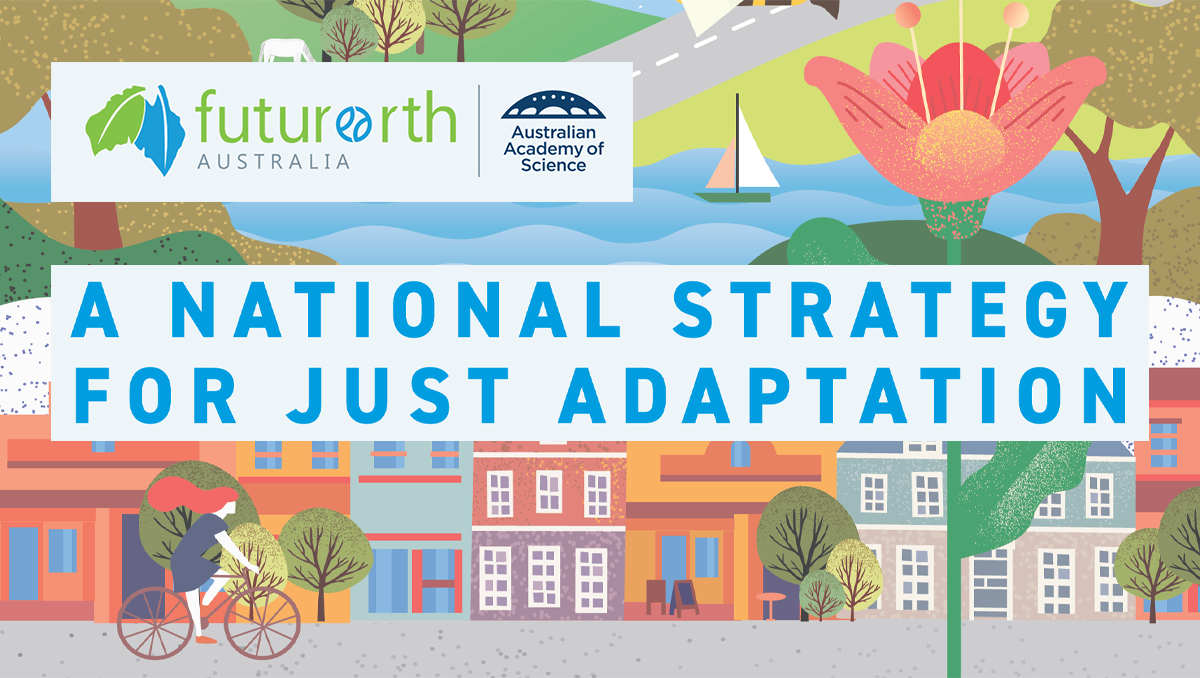
Australia must address social injustices and support communities experiencing multiple and intersecting vulnerabilities as we adapt to a changing climate, argues a new report from Future Earth Australia.
A National Strategy for Just Adaptation, to be launched tonight (6 September) at Parliament House, aims to broaden and reimagine the way adaptation policy, planning and action are framed in Australia.
It will be launched by the Assistant Minister for Climate Change and Energy, Senator the Hon Jenny McAllister.
The strategy, developed over two years by an Expert Working Group of 35 authors from 13 university, government and private partners, highlights how everyday social inequities, uneven capacities and unequal representation undermine how well people can adapt to climate change.
Bhiamie Williamson from the Australian National University, a Euahlayi man from north-west New South Wales and Co-chair of the Expert Working Group that developed the strategy, said a central component in this new approach was recognising and including the voices, experiences and ambitions of the many people who make up Australia today – especially Indigenous Peoples.
“Recent disasters, like the flooding crisis on the east coast, have shown how entrenched inequalities multiply the risks that communities face in times of crisis,” Mr Williamson said.
“Ignoring the diversity of our country’s residents, including their needs, aspirations and capabilities, weakens Australia’s collective ability to adapt.”
Dr Petra Lundgren, Director of Future Earth Australia, said the new strategy provides a counter-narrative to previously developed adaptation strategies.
“It moves from focusing on largely technical elements to encompassing social, political and behavioural strategies and systems change,” Dr Lundgren said.
The strategy forms the backbone of Future Earth Australia’s Reimagining Climate Change Adaptation initiative that began with a state-by-state consultation in October 2020, followed by the Reimagining Climate Adaptation Summit in April 2021.
It sets out the following five practical directions for achieving transformational change in Australia’s climate adaptation planning and practice:
Professor Petra Tschakert from Curtin University, Co-chair of the Expert Working Group, said the strategy looks at adaptation as not merely an adjustment to climatic hazards and climate-related policies, but also as an urgent effort to address and overcome inequities that are all too often couched in the seemingly benevolent language of ‘vulnerable people’.
“It is precisely this labelling of ‘the vulnerable’ that obscures the structural inequities that produce vulnerabilities and maintains the uneven distribution of adaptive capacities in society. We need to move beyond this,” Professor Tschakert said.
Based at the Australian Academy of Science, Future Earth Australia is a peak initiative that convenes leaders across expertise, sectors and the nation to advance the sustainability agenda and forge pathways to a thriving future.
Future Earth Australia has previously produced national strategies on sustainable oceans and coasts and sustainable cities and regions.
Future Earth Australia’s vision sees Australia and its people thriving in, and contributing to, a sustainable and equitable world. It brings together influential voices to deliver leading research and programs on Australia’s most pressing sustainability challenges, and connects to unique global networks to leverage international expertise.
© 2025 Australian Academy of Science